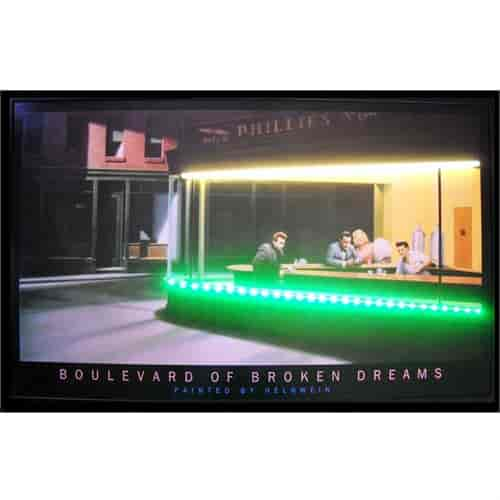
I was about to ask my readers a question:
"who is responsible for that now-classic image of a diner at a street corner with James Dean, Marilyn Monroe, and I believe Elvis Presley sitting nonchalantly inside?
"The viewer is supposed to imagine himself driving by that street corner, getting a glimpse of these legends, but of necessity hurrying on...."
But then I realized -- hey, you're on the internet thing, dummy! You can find it. So here it is. Boulevard of Broken Dreams.
I had misremembered the created/captured moment. Elvis isn't sitting about nonchalantly -- he's working there, behind the counter, serving Monroe, Dean, and Humphrey Bogart.
And the artist? Gottfried Helnwein, working a variation on Edward Hopper's Nighthawks.
I find Helnwein's image much more arresting than Hopper's. But you can judge for yourself, dear reader, because this is after all the internet.
Comments
Post a Comment